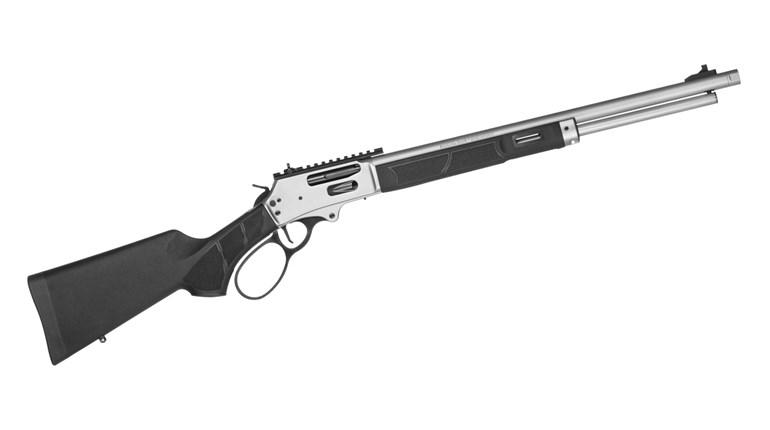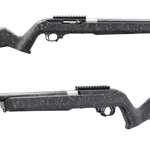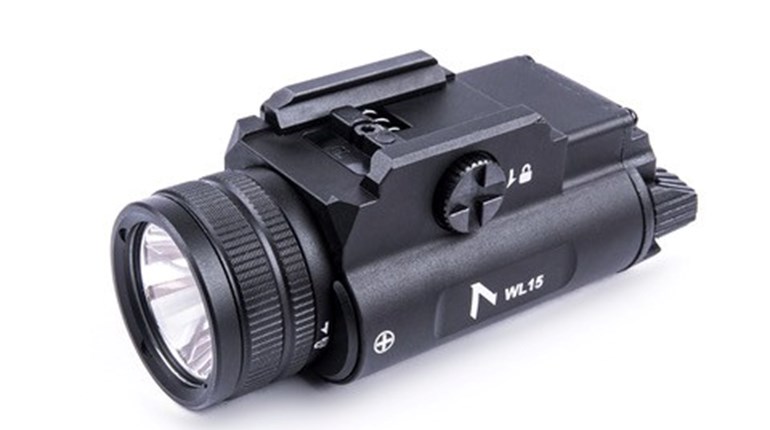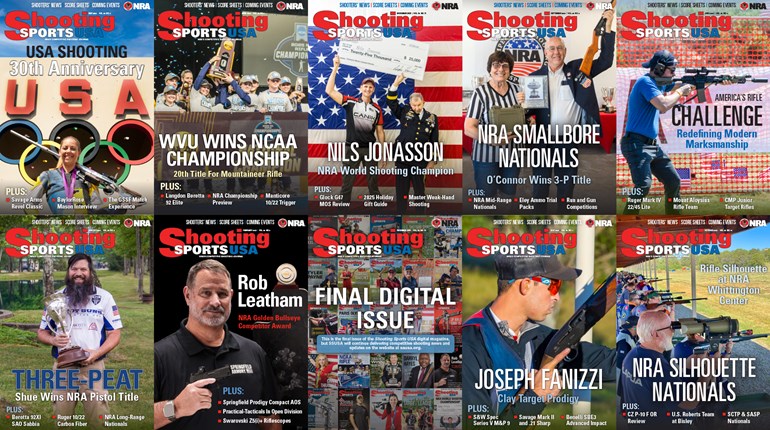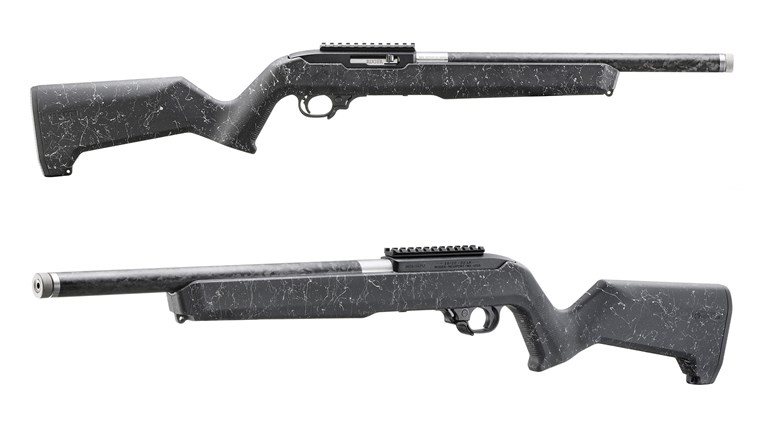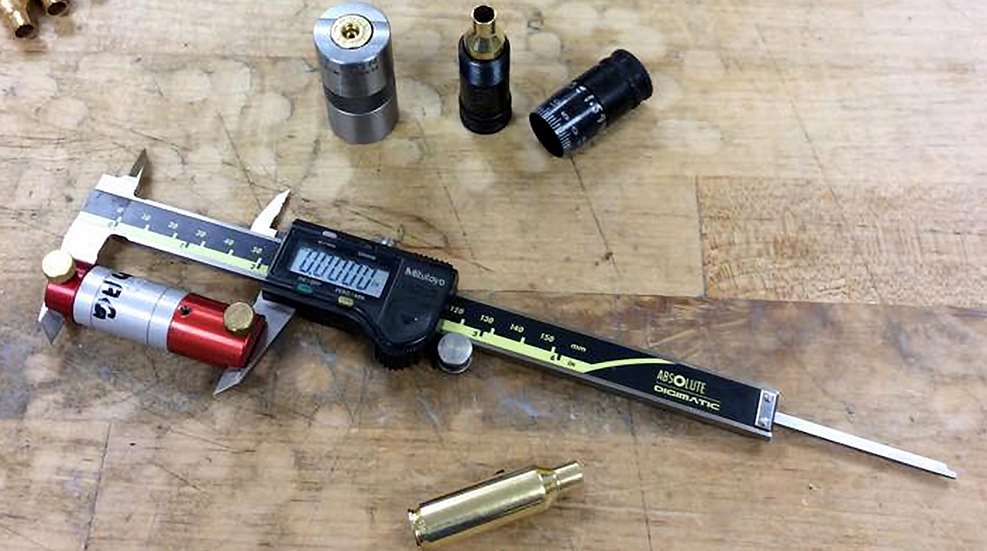
WARNING: All technical data in this publication, especially for handloading, reflect the limited experience of individuals using specific tools, products, equipment and components under specific conditions and circumstances not necessarily reported in the article and over which the National Rifle Association (NRA) has no control. The data has not otherwise been tested or verified by the NRA. The NRA, its agents, officers and employees accept no responsibility for the results obtained by persons using such data and disclaim all liability for any consequential injuries or damages.
Above: Cartridge Case Headspace can be measured with a variety of tools.
Previously, we discussed the various types of progressive reloading presses, and covered their advantages and drawbacks for new vs. experienced users. In this article, we’ll address some unusual quirks that can occur when loading progressively, particularly for rifle cartridges, plus solutions.
CAVEAT: While our handloading shop has several progressive presses, ALL of our powder charges are thrown/weighed by hand. We do not use powder measures on our presses. Our progressives are used for brass preparation, priming, seating, etc., but not for fully-progressive loading.
For those who like to keep their sized cartridge-case headspace very exact, one aspect of progressive rifle loading is rarely, if ever, mentioned. Setting the full-length (FL) sizing die carefully to the desired headspace length for your chamber is a bit more complex than on single-stage presses.
Most folks set up and adjust the FL die individually, independent of the other dies on the toolhead. Once they have the headspace where they want it, they then move on to the other dies and consider the headspace setting resolved.
Actually, the AMU Handloading Shop has measured noticeable headspace differences in cartridge cases sized singly on progressives, vs. those sized when all the dies are working together (i.e., loading fully-progressively). Thus, at the beginning of each loading session, if very-uniform, tight headspace control is an issue to you, check the headspace of the first few cases processed.
Often, the first few cases processed, before all stations are working on cartridge cases, will have different headspace than those prepared in the “usual” configuration (shellplate full, all stations active.) Sometimes the difference is minimal, or it can be several thousandths—perhaps out of the meticulous loader’s “tolerance range.” Such cases, if safe, can be used for sighters, chronographing, practice, etc.
Thus, one should minimize running the press without all stations active if the goal is maximum uniformity.
In like fashion, the powder measure can dispense somewhat different charges when first set up vs. when the machine is fully operational. This occurs when using only the measure station while adjusting the charge, and can be most significant when loading match grade handgun ammunition.
If one uses the same pistol case several times while adjusting the measure, the case is typically expanded on the first attempt only. Depending on the dies, much pressure may be required to remove the expander from the just-expanded case. The press vibrates/jolts differently when loading progressively, and the charge changes.
This is especially prevalent when working with virgin brass, as it hasn’t been expanded at the web by firing. With previously-fired pistol brass, the pressure needed to free the case is often much less, affecting the movement of the press and measure during operation.
This writer finds that, when loading his personal handgun ammunition progressively, setting the measure’s powder charge with a single case gets the powder charge close to the target weight. However, he considers it correct only after the setting has been verified several times while cases are being processed in all stations. Naturally, the amount of variation can differ significantly depending on the type powder used.
It is wise to check several powder charges—this verifies that the average charge weight is the one desired. It also gives a picture of how much the powder charges vary, given your particular machine, powder measure, dies, cases and the powder chosen.
SAFETY TIP: In an earlier article, this writer suggested that new handloaders should learn on single-stage presses until they have a firm, intuitive grasp of each operation. From there, they may begin progressive loading much better prepared to safely prevent and/or diagnose issues as they arise. Being acutely aware of what is happening at each station each time the handle is operated is an important skill. It comes much faster to experienced handloaders.
An example of this phenomenon may seem obscure, but it isn’t, necessarily—it just isn’t mentioned in print, as far as this writer knows. When progressively loading for .380 ACP, he noticed that cycling the press ram without a case in the expander/powder dump station bumped the shellplate into the expander, raising it slightly. This, of course, partially activates the powder measure on his particular machine.
Doing this once equals a small increase in the next powder charge. Doing it several times in a row, such as when adjusting dies or correcting malfunctions, can make the next charge up to several tenths of a grain heavier than usual. In a .380 case, that is significant due to the very limited case volume.
Depending on how heavily one loads, say, the 9x19mm (Parabellum) cartridge, this could also be an issue if the expander/measure die tip can touch the empty shellplate. Another variable is the type of pistol one is using. For example, a Colt 1903/1908 Hammerless Pocket Auto (Model M) in .32 ACP or .380 will happily gobble up ammunition that can badly bulge cases in the new breed of tiny plastic autos.
Cases that emerge in excellent condition from the Colts can look like pregnant guppies after firing in certain other pistols. They don’t support the case/lock up the same as the Colts. The bulges witnessed appeared downright scary—very close to bursting the case. The loader actually discarded these cases after firing, due to safety concerns about the effects of such a bulge.
While this example may or may not relate to your current handloading, it is good to be aware of such things so one can detect them if they occur in future.
Priming of rifle cases is another issue on progressive presses. This article has discussed the lengths the AMU Handloading Shop goes to, to ensure very uniform, safe seating of rifle primers when prepping brass progressively. Primer depth is set to the desired range and checked with a gauge every time a machine is set up to prime.
Depths normally vary about 0.001 to 0.003 inch from case to case. Thus, it’s good to check several to ensure all cases will meet your criteria. Machines that have a positive priming ram stop, which limits depth to the same degree for each case, can and will need adjustment when changing to brass or primers from different makers. Adjustments may even be needed when switching individual production lots from the same maker. Machines without a priming ram stop depend on the operator to fully seat the primer to the bottom of the primer pocket.
A lesser-known phenomenon when priming progressively—especially with rifle brass—is that primer depth can be significantly different when the shellplate is empty vs. when all stations are processing cases. Thus, settings derived when measuring primer seating depth with only one case in the machine should be verified after several cases have been primed with a full shellplate.
Many, if not most, progressive handloaders would likely consider the differences discussed here to be trivial and insignificant for their loading and accuracy needs. And, they may very well be right! However, the AMU is addressing an audience interested in extreme rifle accuracy, who want every cartridge as uniform and perfect as they can make it. Thus, we discuss these relatively little-known phenomena in hopes it is educational.
Certainly, one should never, EVER load ammunition to such high pressures that a 0.2 or 0.3 gr. over-charge can lead to disaster. That is far too fine a line to walk, as infinite variables in components, firearms and weather conditions can affect pressure at any time. NEVER exceed published, maximum safe data from a reliable, recent handloading manual. Leaving an adequate margin for safety is not only good practice, it is also common sense!
In the next article, we’ll discuss some ways to help ensure that one dispenses the most uniform powder charges possible when loading rifle ammunition progressively.
Until then, be safe, hold hard, and good shooting!
SSUSA thanks the U.S. Army Marksmanship Unit for allowing the reprint of this article.













